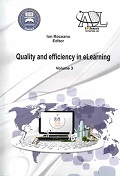CLOUD DATABASE FOR SETTING THE MORPHOLOGICAL TYPOLOGIES FOR HUMAN BODIES
CLOUD DATABASE FOR SETTING THE MORPHOLOGICAL TYPOLOGIES FOR HUMAN BODIES
Author(s): Raluca Maria Aileni, Adrian Salistean, Claudia NiculescuSubject(s): Education
Published by: Carol I National Defence University Publishing House
Keywords: cloud; database; body; scanner; morphtype; pattern; design
Summary/Abstract: This paper presents some aspects regarding the usage of the cloud computing platform in the anthropometric study area. The cloud database has the advantage of ensuring high performance with minimal risk of data corruption. The users, different research centers, can run databases by using a virtual machine image. The database used on the cloud will be sql based (mysql database). The positive aspect of using cloud computing is the convert access database in a simple way and enables the access to a variety of mobile devices. Cloud computing is the use of computing resources (hardware and software) that are delivered as a service over a network. If it is assumed that there are a variety of scanned human bodies inserted into existing databases on different computers anywhere in the world, then these data can be the subject of classification or can be accessed and used quickly and efficiently to achieve optimization of bodies to be used in simulations subsequent. The fact consists in obtain and manage databases that containing data on antropomorphological populations from different countries. The objectives are to establish the body morfotype classification for different population and ages. These databases will contain information centralized and taken by each country's population by using the 3d scanner. The goals of this motion will be to obtain fast an comparisons between different types of human bodies used in the investigation necessary to establish the appropriate body size that can be used in the structural design of clothing pattern design. This approach is useful both universities with specific profile design patterns for clothing but also for clothing manufacturers.
Journal: Conference proceedings of »eLearning and Software for Education« (eLSE)
- Issue Year: 9/2013
- Issue No: 03
- Page Range: 374-377
- Page Count: 4
- Language: English

